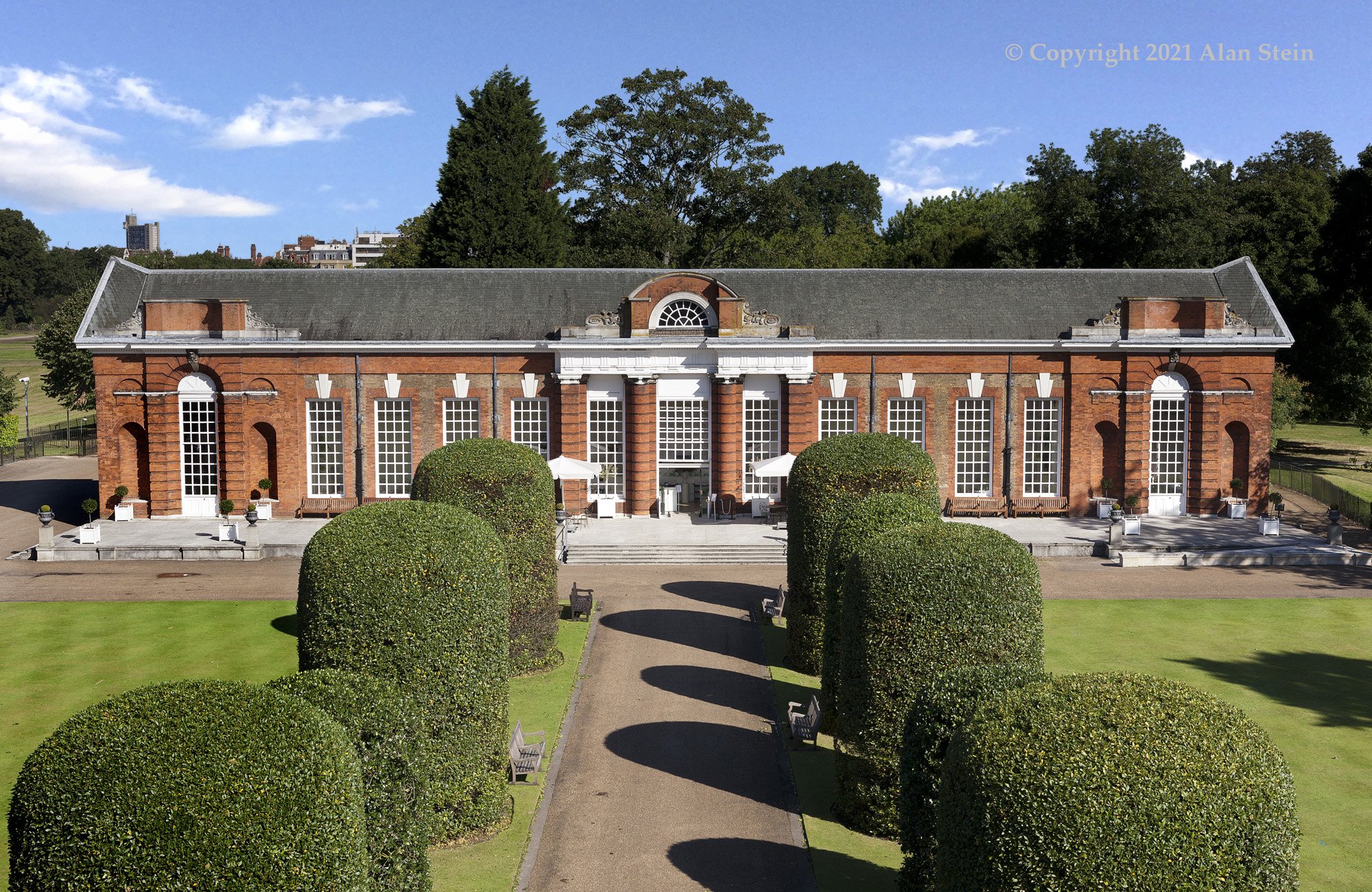
The Orangery at Kensington Palace
London, England, 1761, Nicholas Hawksmoor
Inherited by Queen Anne, the daughter of British monarch James II, Kensington Palace housed the queen’s passions, including her orangery. The orangery in Kensington Palace always served as Anne’s greatest place of refuge. Few changes were made to the structure once she inherited it, save for the orangery. The interior of the space had been decorated for royalty and Anne kept it that way, but with the addition of her plants. She used the space to entertain guests and host lavish parties. As an elderly woman, she enjoyed sitting amongst and spending time with her plants.
Photo courtesy of London Perfect
Constructed of red and brown brick, the orangery at Kensington Palace was designed by popular English architects specializing in the Baroque era. These architects, by the name of Nicholas Hawksmoor and Sir John Vanbrugh were known for dynamic architecture. The structure, however, does not feature the ornamentation that was in extremely popular palaces like Versailles. The building is simple, boxy but still telling of the time period. Glass was expensive at the time, but the monarchy could afford to glaze the south-facing openings, and hang triple-hung windows that could be altered depending on the weather.
The gardens in the front of the property were designed by acclaimed royal gardener, Henry Wise. Referencing French inspiration, the interior continues with the theme.
![02_Cons_ch2_005[2C].jpg](https://images.squarespace-cdn.com/content/v1/5f11b7e4e3277041fd2580c6/3417f4fe-2950-4650-b2bc-0d58f15b9ab2/02_Cons_ch2_005%5B2C%5D.jpg)
![02_Cons_ch2_007[1B].jpg](https://images.squarespace-cdn.com/content/v1/5f11b7e4e3277041fd2580c6/9c717f60-eacd-4a5f-9594-16783d33cb69/02_Cons_ch2_007%5B1B%5D.jpg)
Photo Credits: © Historic Royal Palaces. Photograph: Robin Forster (Heading), London Perfect (Body Image), © Historic Royal Palaces. Photograph: James Brittain (Image of Queen Anne), Crown Copyright: Historic Royal Palaces (Interior Orangery photograph)

